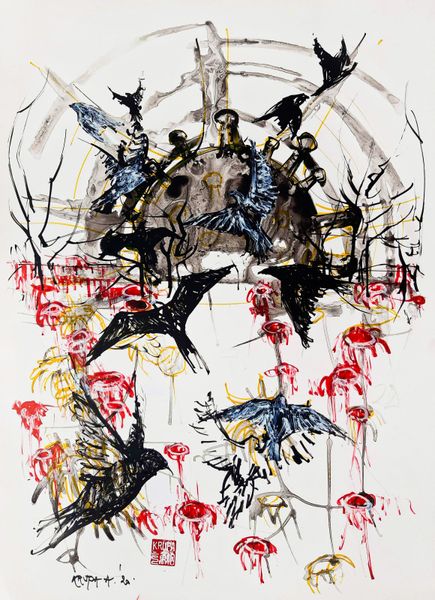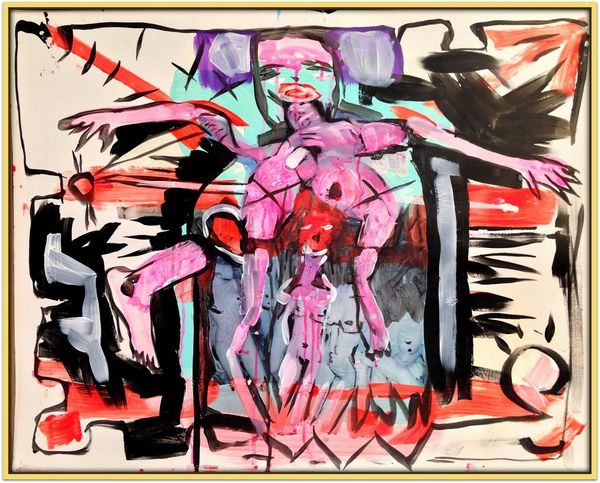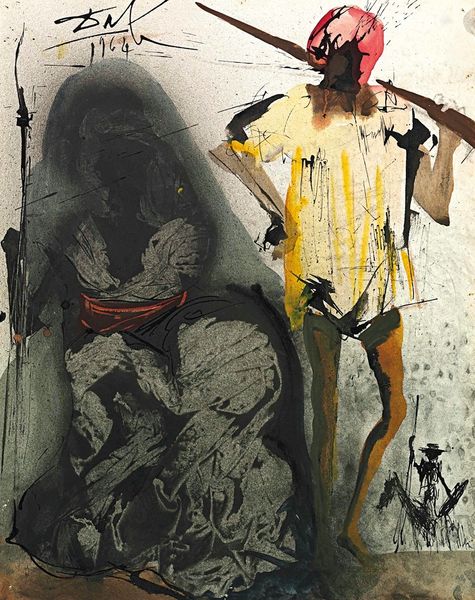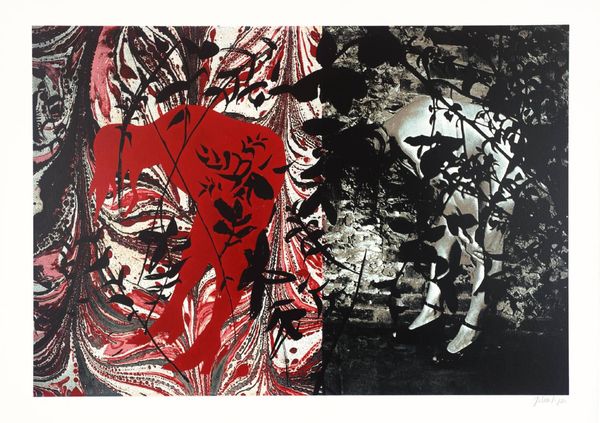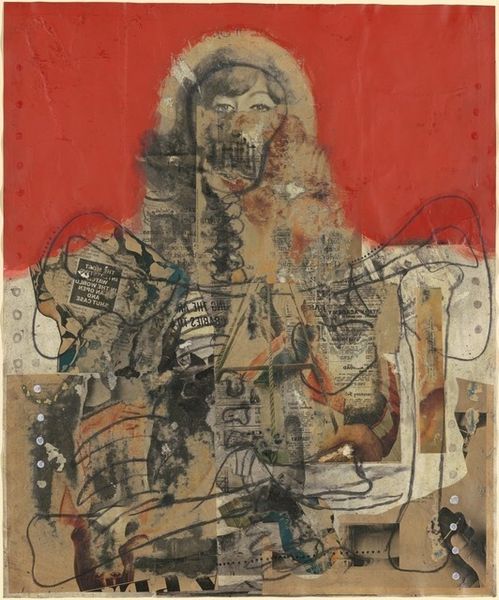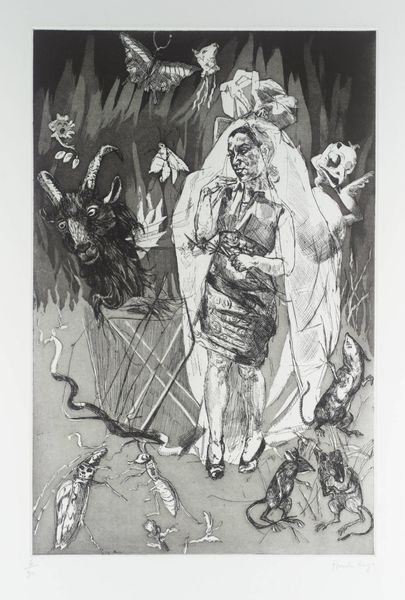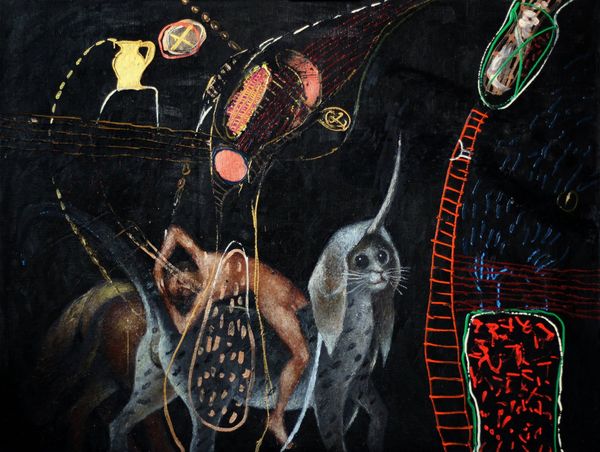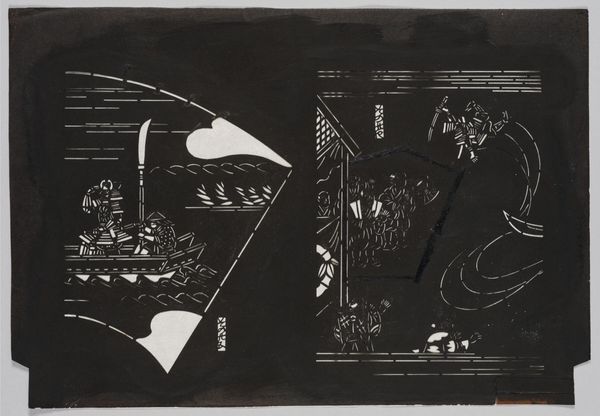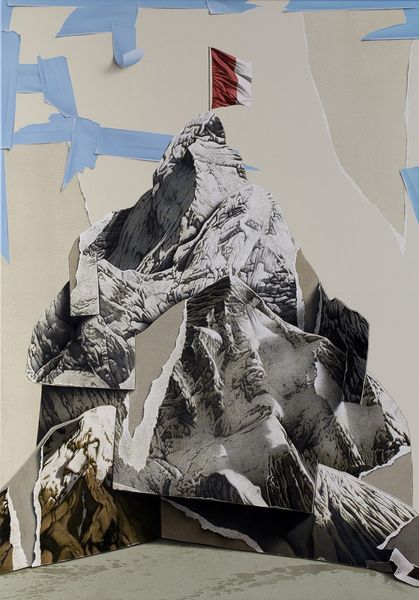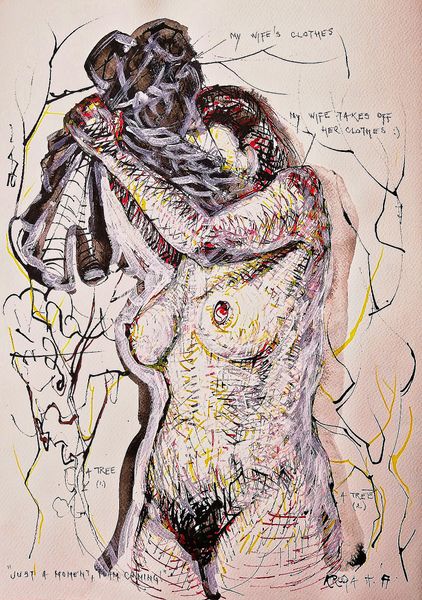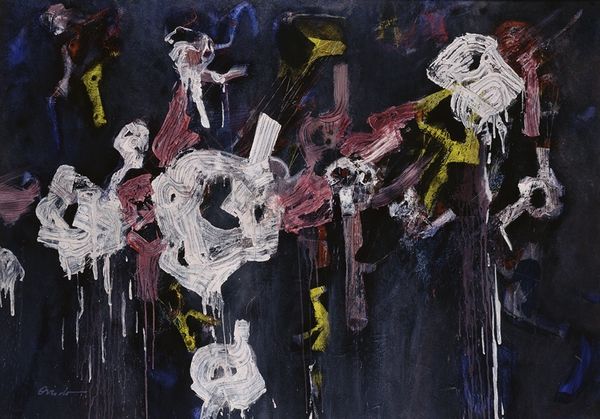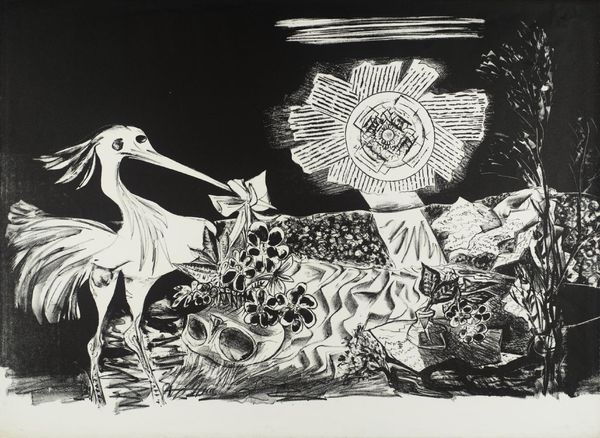
painting, charcoal
#
portrait
#
animal
#
fantasy art
#
painting
#
sculpture
#
landscape
#
figuration
#
surrealism
#
charcoal
#
surrealist
#
surrealism
Copyright: Sue Coe,Fair Use
Editor: This drawing, "Topsy" by Sue Coe, depicts what looks like a circus scene. There's an elephant in chains, shadowy figures, and a ballerina near a brightly lit stage. The contrast between light and dark creates such a dramatic and unsettling atmosphere. How do you interpret this work? Curator: The darkness holds echoes, doesn’t it? I see how Coe uses the circus—traditionally a space of entertainment—to stage something much darker. The chains bind not only the elephant, evoking historical subjugation, but also the viewers, linking us to uncomfortable truths. Editor: That's a good point. The elephant does seem to represent something larger than just itself, more like a symbol of exploitation. Curator: Exactly. Coe’s layering of imagery points to deeply ingrained cultural narratives. What do you notice about the ballerina, placed so close to the stage? Editor: She almost looks like she’s outside of the spectacle, or maybe even complicit in it somehow? Is the contrast in the grayscale meant to emphasize her innocence, or a lack thereof? Curator: A crucial question! This could reference the idea of the spectacle masking cruelty, or of performance as a form of control. Do you recognize any cultural references at play here, considering the title, "Topsy?" Editor: I am unfamiliar. Does the artist employ the piece to invoke emotional understanding? Curator: Yes! "Topsy" calls upon the tragic history of a real elephant and connects it to a lineage of abused animals, challenging us to unpack the dark symbology underpinning entertainment. In the piece the symbols have power: both visual and emotional. Editor: It really sheds light on how images carry cultural memory, and how an artist can reveal these narratives. I see things completely differently now, thank you.
Comments
No comments
Be the first to comment and join the conversation on the ultimate creative platform.
